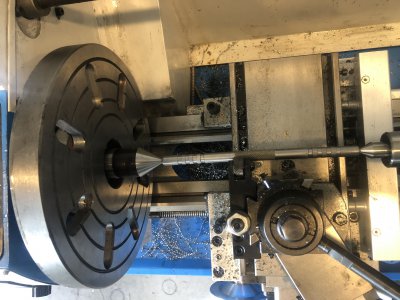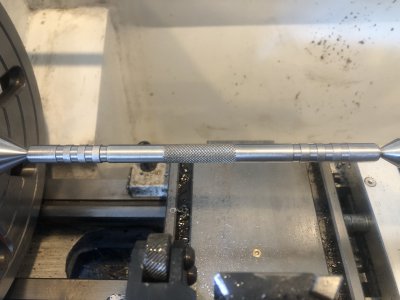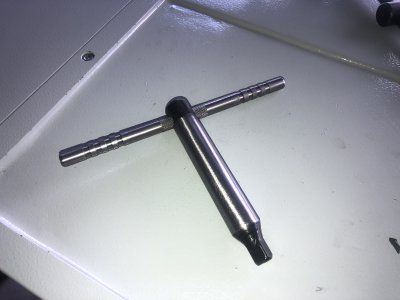-
Welcome back Guest! Did you know you can mentor other members here at H-M? If not, please check out our Relaunch of Hobby Machinist Mentoring Program!
- Forums
- THE PROJECTS AREA
- PROJECT OF THE DAY --- WHAT DID YOU DO IN YOUR SHOP TODAY?
- Project of the Day Mega-Thread Archives
You are using an out of date browser. It may not display this or other websites correctly.
You should upgrade or use an alternative browser.
You should upgrade or use an alternative browser.
2021 POTD Thread Archive
- Thread starter Gaffer
- Start date
- Joined
- Sep 22, 2019
- Messages
- 1,041
I positioned the part there just for the picture. The actual bending was done in the center of the vise, 3/16" x 3/4" mat'l and I lubed the back side of each piece as it was bent. It is a cheap import vise that already had issues and was on my mill when I bought it.
That is more than likely the biggest piece I will use it for as I also have a much larger, but more difficult to use for small stuff, hydraulic brake
It has since been replaced with a nice used Kurt.
I plan on using the brake to form some trays from .060 aluminum for to store longer bolts than what will fit in my bolt/nut storage cabinet.
That is more than likely the biggest piece I will use it for as I also have a much larger, but more difficult to use for small stuff, hydraulic brake
It has since been replaced with a nice used Kurt.
I plan on using the brake to form some trays from .060 aluminum for to store longer bolts than what will fit in my bolt/nut storage cabinet.
Last edited:
- Joined
- Dec 18, 2019
- Messages
- 7,395
The reason is that many vises are not meant for that kind of load. I did that once. (Use the vise as a press.) The vise nut, which was made out of cast iron broke, rendering the vise useless. Vise was old and off-shore so no spare parts. Couldn't get the remnants of the nut out of the vise base. No amount of coaxing, or hammering would release the lower part of the nut. Had to junk the vise. So proceed with caution.That setup is kinda awesome! Ya know, a few decades ago (more like 40 years), I was told that "vises are not to be used as presses or anvils. Presses are for pressing and anvils are for hammering against. Vises are for clamping"
- Joined
- Jul 14, 2017
- Messages
- 2,455
This day started interesting, it was - 9 celsius when i left to work. On my way out of town i felt power loss uphill but it come back quickly, few dozen km i felt it again. And finally 2km from my work place i died. I know exactly what it is, the diesel fuel has frozen. Got out open the hood try the hand pumps i have two one in front of the filter one after it. The filter had frozen, the fuel is heated as it enter the filter housing but there must be lots of water in it. Crank it it fired up drove it 1km it died again, stopped for 1 min crank it again it started and i got to work. After work temps had risen to - 2 but that was enough not to have any problems on my way home. I picked up a new filter and replaced it this is what i drain the fuel was black i also removed 2-3 tablespoons of black sand from the bottom of the filter housing. Here we do not have winter diesel fuel because we don't have harsh winters. Now it desperately needs a good bath but it have to wait for the temps to increase, at times like this i'm questioning myself should i fit a diesel engine in the little niva.
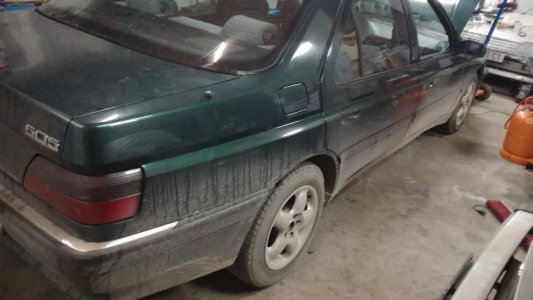
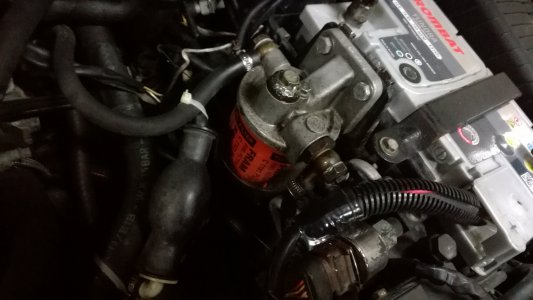
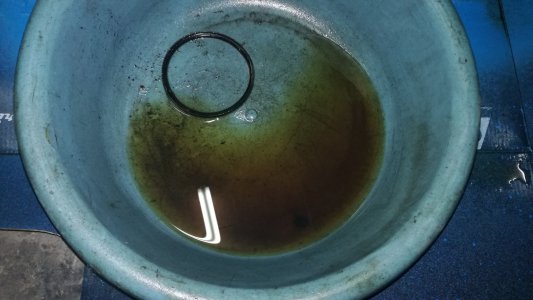



- Joined
- Sep 8, 2019
- Messages
- 4,392
- Joined
- Dec 18, 2019
- Messages
- 7,395
How did you do that? Wouldn't the thin rod just push away from the knurler? Or is that not a bump knurler?For the first time, I put the face plate on my PM-1030V (this was very easy & self-explanatory).
I turned a handle for a lathe chuck key.
View attachment 351964
View attachment 351965
- Joined
- Sep 8, 2019
- Messages
- 4,392
How did you do that? Wouldn't the thin rod just push away from the knurler? Or is that not a bump knurler?
Yes, a bump knurler. The knurling was friction turning between centers. The workpiece flexed a little, but I just went slow and used a lot of oil.
The turning, chamfers, grooves, etc. was with my 4 jaw.
I tried to use my lathe dog, but the dog didn’t reach up to the slots.
- Joined
- Dec 18, 2019
- Messages
- 7,395
Question was more about deflection, rather than how the rod was turned. Didn't the rod bend a lot while knurling, or did you have a follow rest? The rod is rather long relative to it's diameter. Is that a bump knurler, or a different kind? I've only knurled something once before, and it took a relatively large amount of force. That's why I was asking.I took off the lathe dog before I snapped the photo.
- Joined
- Sep 8, 2019
- Messages
- 4,392
Question was more about deflection, rather than how the rod was turned. Didn't the rod bend a lot while knurling, or did you have a follow rest? The rod is rather long relative to it's diameter. Is that a bump knurler, or a different kind? I've only knurled something once before, and it took a relatively large amount of force. That's why I was asking.
I should have used a follow rest, but this knurling job served the purpose of increasing the OD (“not seen”).
I did not expect this to work, but I tried it anyway. This is definitely a bump knurler.
I came in very slow. I used so much CF. I must have made 20 very unaggressive passes. The workpiece was deflecting a bit. Frankly, I’m surprised it turned out as good as it did.
Even if I have support, I am never aggressive when I knurl. I just make a ridiculous amount of passes.
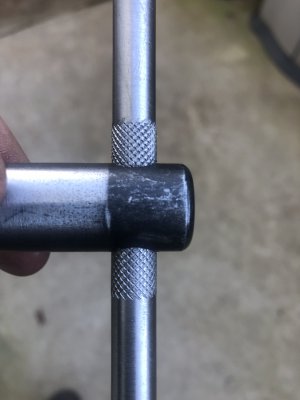
- Joined
- Dec 18, 2019
- Messages
- 7,395
Oh, forgot to mention, @erikmannie that's a nice chuck key, it came out well. Sorry I didn't say that first, before I peppered you with questions.

